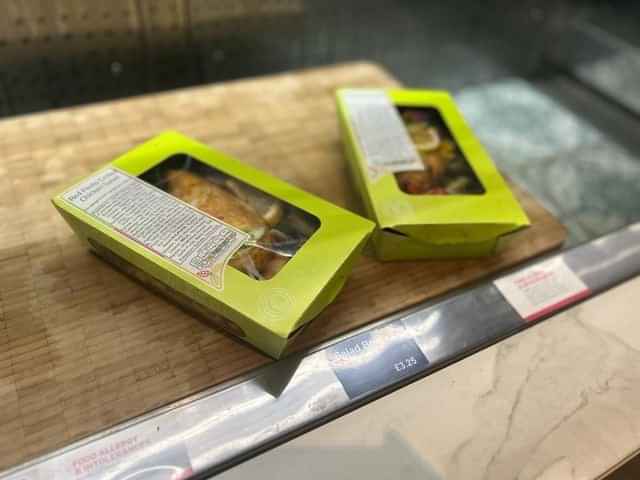Compostable Myth Buster
With packaging a hot topic in the news, Planglow breaks down 5 popular myths of compostable packaging.
16.03.20
David Attenborough’s Blue Planet spearheaded the climate debate when it aired in 2017 and brought environmental issues to the forefront of consumers’ minds. Urged to make changes to their habits in order to reduce the damage caused by plastic pollution, consumers have since begun to pay attention to the products that they are using and the packaging that contains them.
As consumer consciousness has increased and demand for a reduction in plastic use, so has confusion over plastic’s emerging replacements. In this blog, we take some time to break down 5 popular myths surrounding compostables.
1. Compostables aren’t actually that good for the environment
A material and its impact on the environment is not a black and white issue. There is not one magic bullet to save the planet but a range of measures. Busy modern lifestyles continue to fuel the need for flexible out of home meal options - 20% of Brits eat lunch out of home up to twice a week, 10% up to four times and week and 5% five times a week or more - so unless there is a swift and momentous cultural shift in our dining habits, that need will endure.
In this context, and with the urgent need to reduce damaging single-use plastic, Planglow believes that compostables are ideal for packaging that will come into contact with food contamination. Once a material has been tainted by food or mixed materials, it becomes incredibly difficult to recycle. According to the National Waste and Recycling Association, 25% of the waste we try to recycle goes to landfill or is incinerated due to contamination.
Our compostable packaging is made from sustainably sourced, plant-based materials. Its life-long use offers a cost-effective solution for non-recyclable food packaging waste, transforming a wide variety of paper-based products simply and sustainably into compost, soil conditioners and energy post-use regardless of ‘contamination’ from food and PLA liners.
2. Plastics perform better than compostables
 The
technology and science behind compostable packaging has come a long way over
the last decade. So much that without the correct labelling, it is incredibly
difficult to differentiate between packaging that is compostable and packaging
that is plastic. We have partnered with manufacturers to produce a dynamic
collection of compostable packaging that will meet the needs of our customers. Available in eight eye-catching ranges, packaging can look good without costing the earth.
The
technology and science behind compostable packaging has come a long way over
the last decade. So much that without the correct labelling, it is incredibly
difficult to differentiate between packaging that is compostable and packaging
that is plastic. We have partnered with manufacturers to produce a dynamic
collection of compostable packaging that will meet the needs of our customers. Available in eight eye-catching ranges, packaging can look good without costing the earth.
What’s more, all of your packaging, labels, menus and ticketing can be customised with your own branding/design by our in-house team of graphic designers.
3. Compostables can be littered as they will naturally break down
No! Please don’t do this!
Compostables do break down into soil – and when placed in the right conditions can break down in as little as 24 hours. HOWEVER! The key word here is “right conditions.” Compostables need to be placed in either a home or industrial composter to achieve the desired outcome.
Throwing compostable packaging on the ground is the same thing as throwing plastic packaging on the ground: littering.
4. There aren’t facilities to dispose of compostable packaging
Currently, the UK’s ineffective waste management system means that it is extremely difficult to correctly dispose of recyclables, food waste and compostables alike. It is critical that the government invests in the development of a centralised waste management system across the UK to reduce waste pollution and ensure the bare minimum of packaging is sent to landfill and incineration. We join other individuals, businesses and organisations lobbying for this change and hope to see the Government begin developing this system once the most recent Environmental Bill is published.
 In the
meantime, Planglow’s partnership with organisations such as PRM Waste
Systems is essential to offer a closed-loop solution. PRM’s bioprocessing
units break down organic waste onsite, including animal, food and Planglow’s
compostable packaging, using aerobic digestion, transforming it into soil
enricher to grow more crops or supplementary biomass fuel. The soil created has
been tested to achieve the industry quality seal, BSI PAS 110, showing that the
end product is of the highest standards.
In the
meantime, Planglow’s partnership with organisations such as PRM Waste
Systems is essential to offer a closed-loop solution. PRM’s bioprocessing
units break down organic waste onsite, including animal, food and Planglow’s
compostable packaging, using aerobic digestion, transforming it into soil
enricher to grow more crops or supplementary biomass fuel. The soil created has
been tested to achieve the industry quality seal, BSI PAS 110, showing that the
end product is of the highest standards.
5. All bioplastics are compostable / Compostables and biodegradables are the same
Whilst compostable materials are technically biodegradable, biodegradable and compostable do not mean the same thing.
When a product is biodegradable it means that it has the ability to break down into natural elements, however does not have a specific time-frame nor an industry standard. Nearly every material is biodegradable if you give it enough time e.g. cigarettes will biodegrade within 10-12 years whereas plywood will decompose within 1-3 years.
Certified compostable materials, however, have been tested by a regulated third party and have been proven to disintegrate in no longer than 12 weeks, when placed in the correct conditions (through an aerobic digester/home or industrial composter). All Planglow packaging is made from plants, never oil-based plastics. The material is either industrially compostable (EN13432 and ASTM D6400 certified) or home compostable (OK Compost Home) to adhere to European and American standards. When placed in PRM’s bio processing units, our packaging can be broken down in as little as 24 hours.
Is compostable packaging right for you?
We hope this blog has helped to bust five popular myths about compostables.
If you’re wondering whether compostable packaging is the right fit for your business, we’d love to hear from you. Get in touch today!




